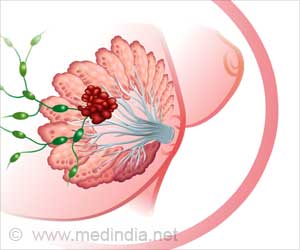
‘Combination therapy using selected drugs and engineered genetic material designed to neutralize the malevolent genes conferring resistance to that drug.
’
Tweet it Now
A potential solution lies in the synergistic combination of a chemotherapeutic drug with engineered genetic material designed to neutralize the malevolent genes conferring resistance to that drug, among other functions.While there are numerous examples of synthetic dual gene and drug delivery vehicles, new hybrid materials developed in the lab at the NYU Tandon School of Engineering use easily modifiable proteins to deliver a chemical one-two punch: they combine a lipid "container" for transfection -- the transportation of cargo past a cell membrane -- and an easy-to-make protein capsule that can bind both small chemotherapeutic molecules and nucleic acids.
Developed by a team led by NYU Tandon Associate Professor of Chemical and Biomolecular Engineering Jin Kim Montclare -- who also serves as an Affiliate Professor of Chemistry at NYU's College of Arts and Sciences, and an Affiliate Professor of Biomaterials at NYU College of Dentistry, as well as being affiliated with SUNY Downstate as a Professor of Biochemistry -- the hybrid lipid-protein material, called a lipoproteoplex, comprises both a coiled supercharged protein macromolecule and a commercially available transfection agent called Lipofectamine 2000.
Because the researchers engineered the protein macromolecule with extensive positive charges on the surface and a hydrophobic core, it can be easily festooned with negatively charged short interfering RNA (siRNA) -- a powerful tool for suppressing genes that invoke drug resistance and propagate disease states --while also serving as an efficient, and toxicity reducing, carryall for the hydrophobic chemotherapeutic agent doxorubicin.
In research published in Biomacromolecules, a journal of the American Chemical Society, the team details how the lipoproteoplex exposed to samples of the MCF-7 breast cancer cell line delivered more doxorubicin to target cells than did Lipofectamine 2000 alone, resulting in a substantial decrease in MCF-7 cell viability. They also demonstrated that the hybrid macromolecule was highly successful at siRNA transfection, silencing the gene by 60 percent.
Advertisement
"Unlike other pursuits at producing dual gene and drug delivery systems, this approach doesn't require tedious chemical synthesis procedures; rather we can biosynthesize any variant of the supercharged protein," she said. "This allows for substituting different siRNA molecules and chemotherapeutic drugs to suit lab needs."
Advertisement
Montclare is investigating the mechanisms that enable these lipoproteoplexes to effectively deliver genes and drugs across different cell lines.
Source-Eurekalert












